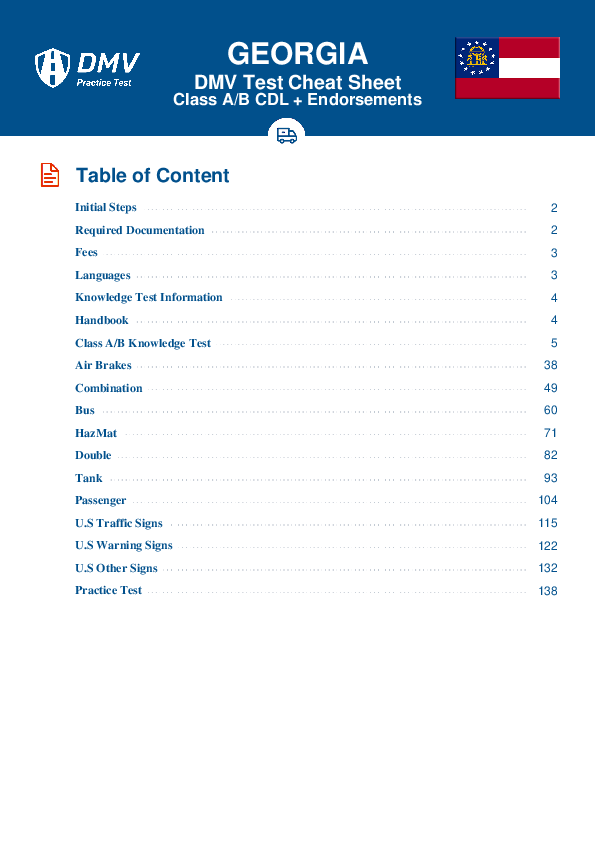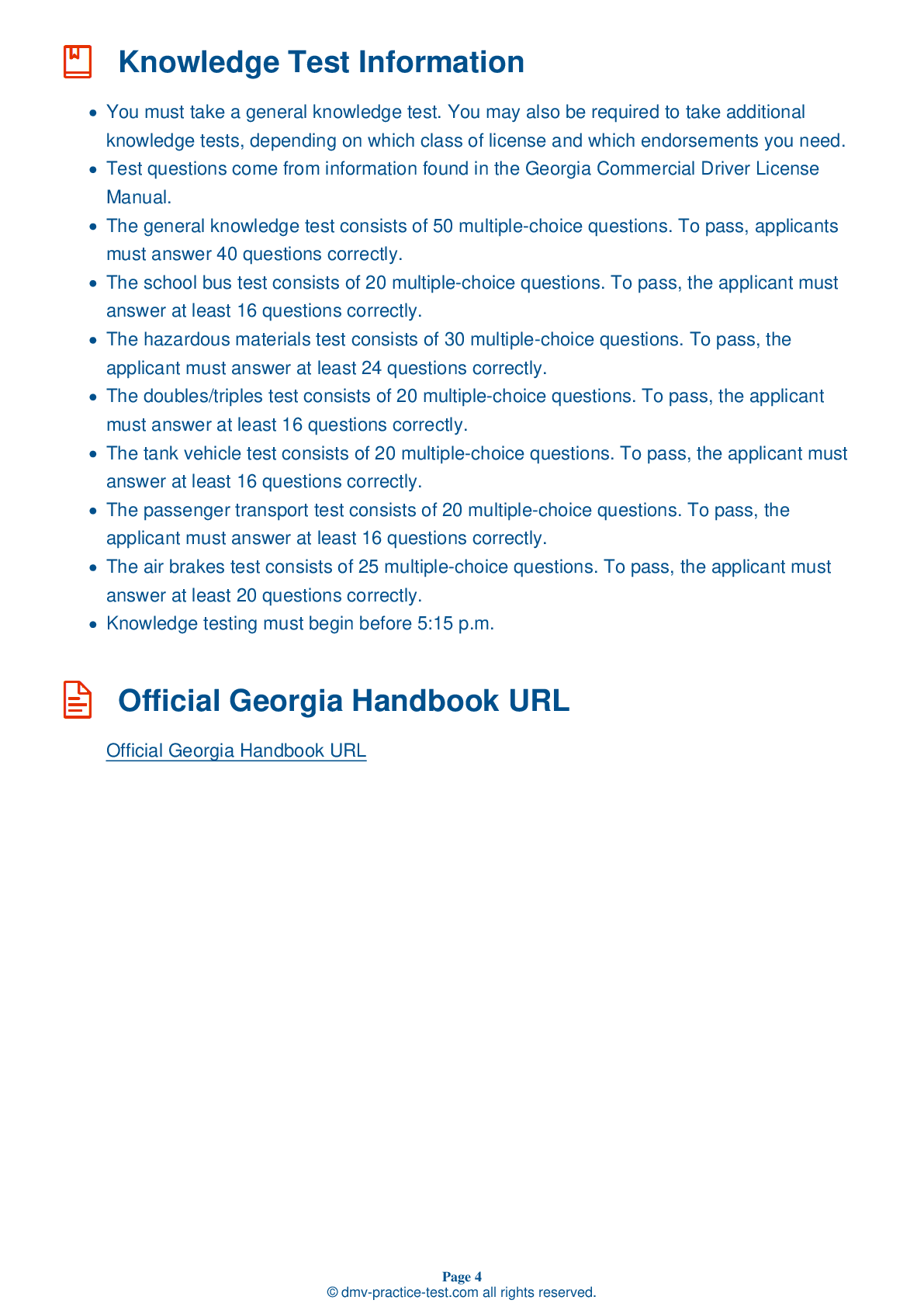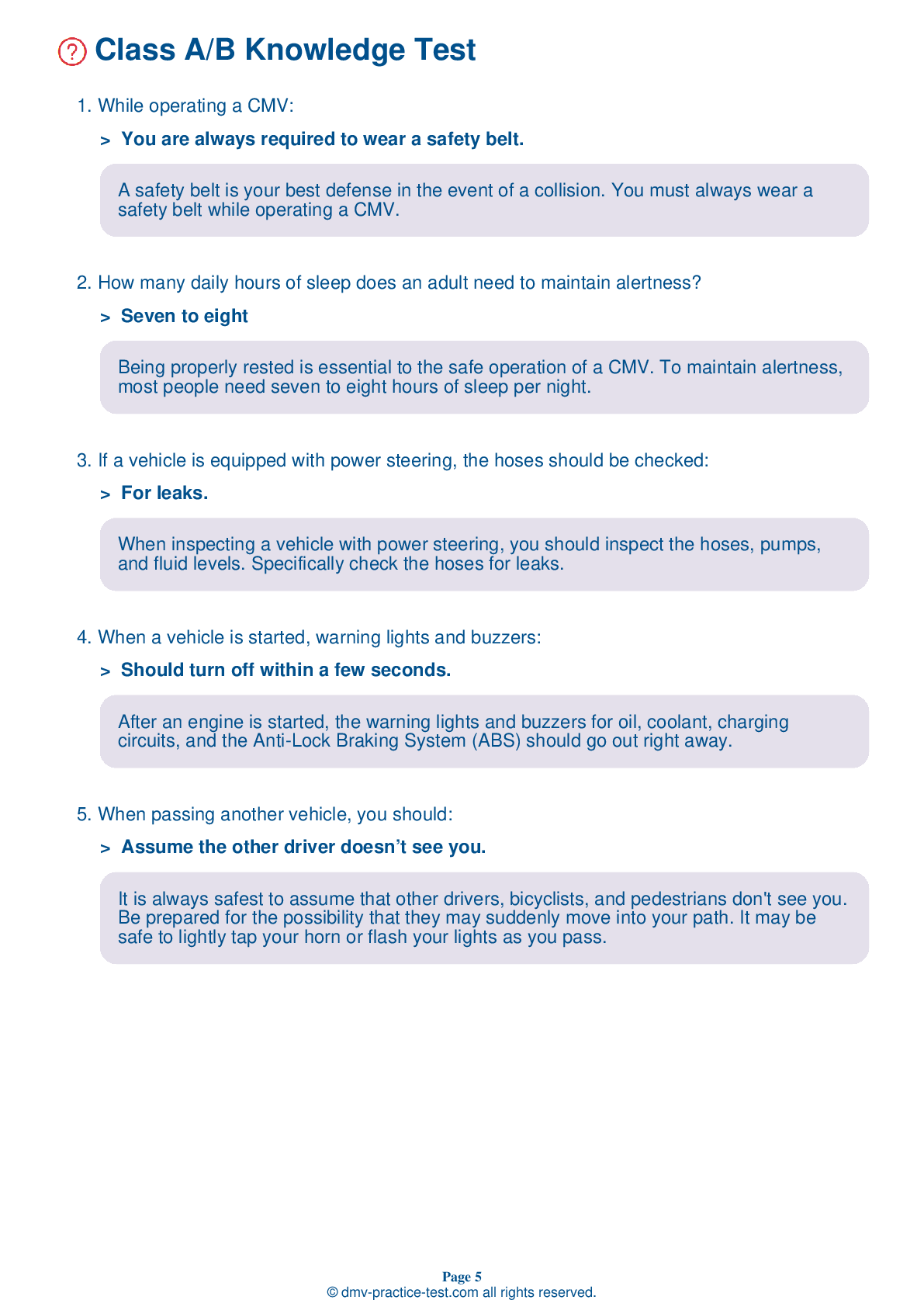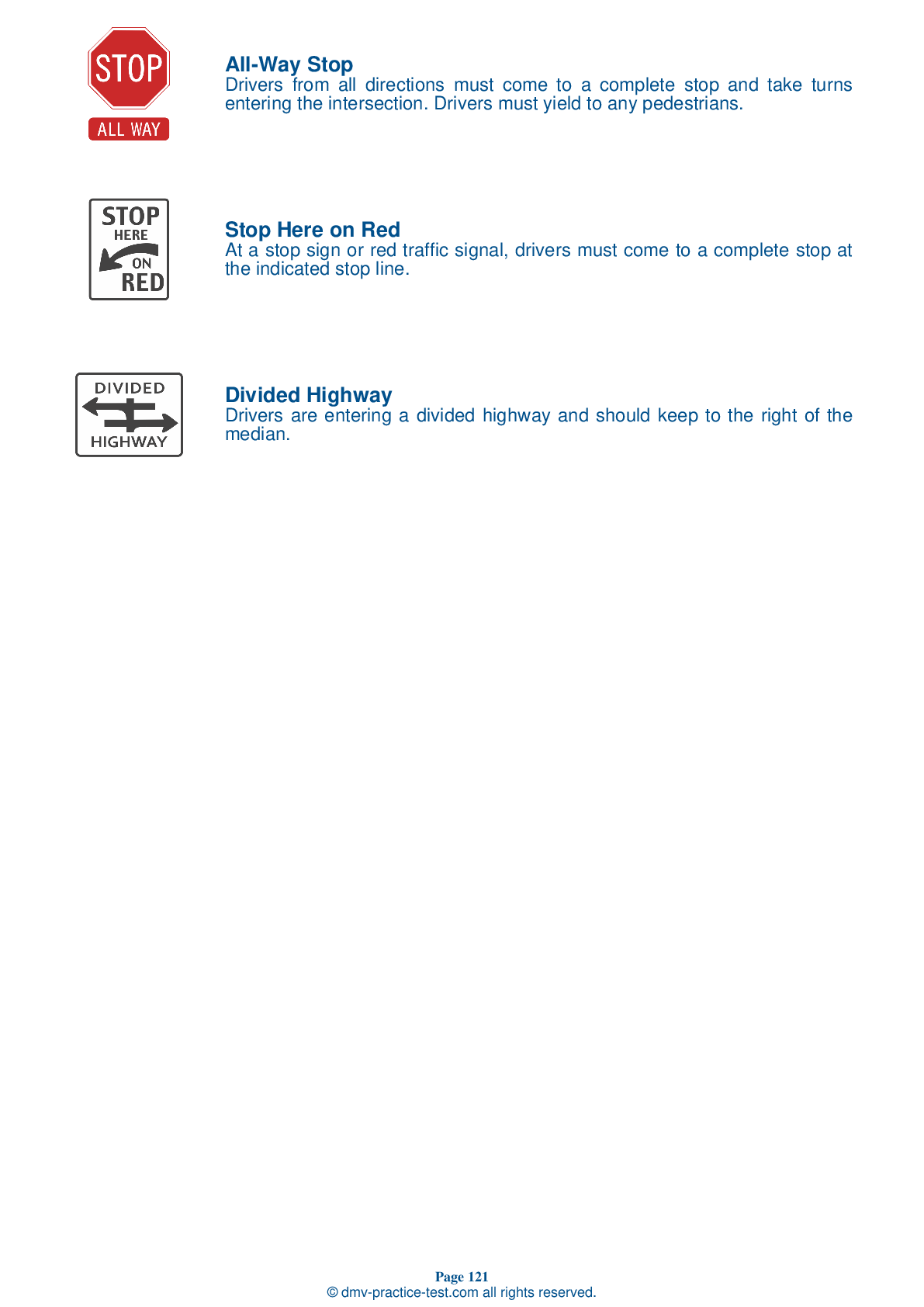HazMat #1
Hazmat Test | Georgia 2025 #1 Page 4 of 5
On our website, we provide FREE practice - CDL hazmat test online! The official exam test consists of several obligatory parts, with all of them checking your knowledge of different blocks of road rules. If you need to obtain a GA CDL hazmat endorsement in 2025, practice as much as possible. Free sample tests published on our website will help you check and improve your knowledge and boost your grades. Please bear in mind that Georgia requirements for issuing a hazmat endorsement for CDL may vary from those established in other states.
30
24
20
19 . If there is a collision involving a vehicle transporting Class 1 explosives, the driver should:
Remove the explosives from the vehicle before separating the vehicles involved in the collision.
If you are driving a vehicle that is transporting Class 1 explosives and it is involved in an accident, you should warn others of the danger, keep bystanders away, and not allow smoking or open fires near the vehicle. Before separating the vehicles involved in the collision, remove all explosives and place them at least 200 feet away from the vehicles and any occupied buildings.
20 . If transporting a package that contains radioactive materials, it is important to know that:
The package should be made of wood.
Radiation will surround each package of radioactive materials and pass through to all nearby packages. The number of packages that can be loaded together is controlled.
21 . A person supervising the loading of a tank:
Must stay within 25 feet of the tank.
The loading and unloading of a tank must be watched by a qualified person. They must be alert; have a clear view of the tank; stay within 25 feet of the tank; know the hazards of the materials involved; know the procedures to follow in an emergency; and be authorized and able to move the tank if necessary.
22 . Placarded vehicles must carry fire extinguishers with a minimum rating of:
5 B:C.
The power unit of a placarded vehicle must be equipped with a fire extinguisher with an Underwriters Laboratories (UL) rating of 10 B:C or more.
23 . If a product requires a "Poison Inhalation Hazard" placard, the placard must be used when transporting:
The product in a leaking container.
For applicable materials, the "Poison Inhalation Hazard" placard and the appropriate hazard class placard must always be displayed, even for small amounts of the materials.
24 . Identification numbers assigned to chemicals can be found:
At fuel stations.
The United States Department of Transportation (DOT)’s Emergency Response Guidebook (ERG) lists all hazardous chemicals and their assigned identification numbers.
2025 Georgia | Frequently Asked Questions
To acquire a CDL Hazmat endorsement in Georgia, you must possess a valid Commercial Driver's License (CDL). Next, pass the Hazardous Materials Endorsement Knowledge Test at a DDS Customer Service Center. Finally, submit to a federal background check and fingerprinting by the Transportation Security Administration. Remember to pay required fees for application and fingerprinting.
To obtain a CDL Hazmat license, you must have a valid Commercial Driver's License (CDL). You must also pass the Hazardous Materials Endorsement Knowledge Test. Additionally, you're required to undergo a federal background check and fingerprinting by the Transportation Security Administration. You must be a U.S. citizen or have legal status, and you should have a clean driving record.
When applying for a CDL Hazmat endorsement, you are required to provide proof of U.S. citizenship or lawful permanent residency. This can be a U.S. passport, birth certificate, or green card. You'll also need your current valid Commercial Driver's License (CDL). Remember to bring documentation for any name changes and payment for the application and fingerprinting fees.
Yes, there is a dedicated written test for the CDL Hazmat endorsement. This test is designed to assess your knowledge of hazardous materials transportation regulations, such as safe loading, unloading, and transport. The test typically includes questions about identifying different types of hazardous materials and understanding emergency procedures. You must pass this test to receive the endorsement.
The written test for the CDL Hazmat endorsement covers a range of topics related to hazardous materials. These include identifying different types of hazardous materials, understanding shipping papers, recognizing placards and labels, handling emergencies, loading and unloading procedures, and understanding the rules for transporting hazardous materials safely.
Yes, there are additional costs associated with obtaining a CDL Hazmat endorsement. These include a fee for the knowledge test, a fingerprinting fee for the TSA background check, and a fee for adding the endorsement to your CDL. The exact amount can vary, so it's best to check with your local DMV for the most accurate information.
Yes, obtaining a CDL Hazmat endorsement requires a Transportation Security Administration (TSA) background check. This includes a review of criminal, immigration, and FBI records. It is meant to ensure that drivers who transport hazardous materials pose no security threat. The process involves fingerprinting and a fee, and it must be completed before the endorsement is granted.
Yes, specialized training is required for the CDL Hazmat endorsement. This includes passing a written knowledge test about hazardous materials regulations and safety procedures. Additionally, a TSA background check is required, but no specific certification beyond the endorsement on your CDL is necessary.
No, you cannot legally transport hazardous materials without a valid CDL Hazmat endorsement in Georgia. This endorsement ensures that the driver has the necessary knowledge and skills to safely handle and transport hazardous materials. Violating this requirement can lead to severe penalties, including fines and suspension of your commercial driver's license.
You can add the CDL Hazmat endorsement to your current CDL license. This involves passing a written knowledge test and a TSA background check. You don't need to apply for a new CDL, but you must go through the endorsement process with the Georgia Department of Driver Services.



